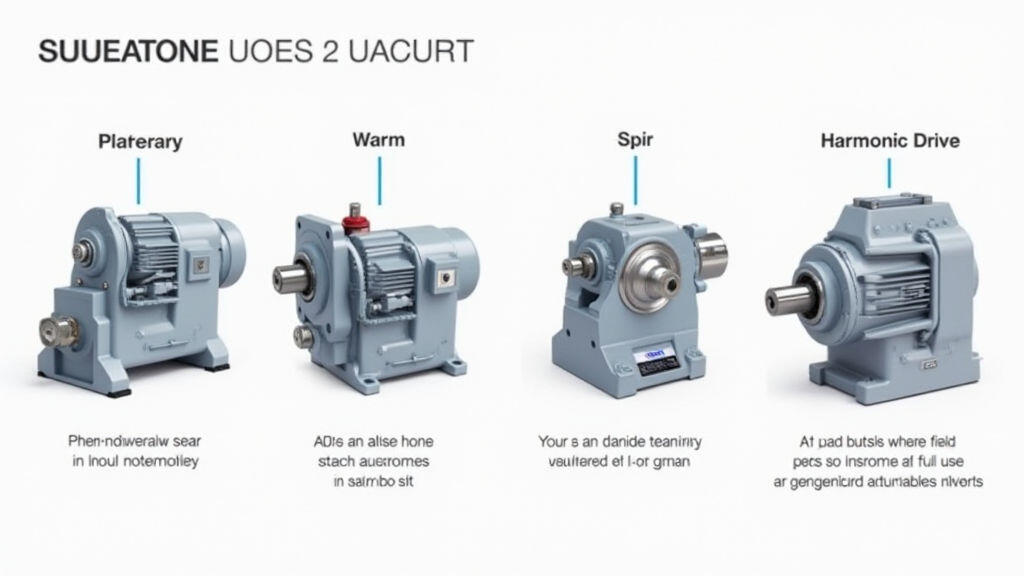Anjing Road, Xiaolan, Zhongshan, Guangdong, China
info@mes-drive.com
08.00 AM-09.00 PM

The manufacturing landscape is undergoing a rapid transformation, driven by the increasing demand for automation, enhanced efficiency, and greater flexibility. Automated production lines are becoming standard in various industries, from automotive and electronics to food and beverage. At the heart of many automated systems lie gear motors – compact, reliable power sources that translate rotational motion into the force and speed needed for countless applications. For gear motor manufacturers, the challenge lies not just in producing high-quality motors, but in strategically configuring them to meet the evolving demands of these upgraded automated lines. This article explores key configuration strategies for gear motor manufacturers navigating this dynamic environment, incorporating insights into current trends like Industry 4.0 and the growing importance of predictive maintenance. We’ll examine design considerations, material choices, integration techniques, and the crucial role of data analytics in optimizing gear motor performance within modern automated systems. Throughout this article, we will reference MES-Drive as a leading gear motor manufacturer implementing these strategies.
The adoption of automated production lines is accelerating. Fueled by factors like rising labor costs, the need for higher precision, and the increasing complexity of manufacturing processes, businesses are investing heavily in automation. These lines incorporate a wide range of equipment, including robotic arms, conveyor systems, packaging machines, and specialized tooling. Gear motors are indispensable components in these systems, driving everything from conveyor belts and robotic grippers to automated valves and dispensing mechanisms.
The functionality of a gear motor extends beyond simply providing rotational power. It's about delivering precise torque, controlled speed, and reliable operation – all crucial for the smooth and efficient operation of automated equipment. Choosing the right gear motor, and configuring it correctly, significantly impacts the overall performance, efficiency, and longevity of the entire automated production line. Poorly configured motors can lead to bottlenecks, increased downtime, and reduced overall productivity, directly impacting a company’s bottom line.
Here are several key configuration strategies for gear motor manufacturers looking to excel in the evolving automated production line market:
1. Understanding Application Requirements: The foundation of any successful configuration is a thorough understanding of the specific application requirements. This includes:
2. Gearbox Type and Ratio Selection: The choice of gearbox type and gear ratio profoundly impacts the motor's performance characteristics.
The gear ratio directly impacts torque and speed. Careful selection ensures optimal performance, balancing the need for high torque with the desired rotational speed. MES-Drive offers expert guidance in selecting the optimal gearbox ratio for diverse applications.

3. Material Selection: The materials used in gear motor construction significantly impact durability, efficiency, and operating temperature.
MES-Drive utilizes high-quality materials, including surface hardening techniques, to enhance the durability and lifespan of their gear motors.
4. Integration Considerations: Seamless integration with the automated system is crucial.
5. Data Analytics and Predictive Maintenance: Leveraging data analytics is transforming gear motor maintenance from reactive to proactive.
MES-Drive provides gear motors with integrated sensors and communication capabilities, enabling real-time data capture and remote monitoring. This allows for predictive maintenance, minimizing downtime and extending equipment lifespan.
The ongoing evolution of Industry 4.0 is shaping the future of gear motor technology. Key trends include:
Configuration strategies for gear motor manufacturers are no longer solely about producing reliable motors. They are about providing integrated solutions that meet the evolving demands of sophisticated automated production lines. By focusing on application-specific design, material selection, seamless integration, and data analytics, manufacturers like MES-Drive can position themselves as key enablers of Industry 4.0. The integration of smart sensors and communication capabilities, coupled with the power of AI-driven predictive maintenance, are poised to revolutionize gear motor performance, efficiency, and lifespan. As automation continues to advance, the ability to configure gear motors for optimal operation within interconnected, data-rich environments will be a crucial competitive advantage. The future of gear motors lies in their ability to seamlessly integrate with digital ecosystems, providing not just power transmission, but also valuable insights into system performance and predictive maintenance capabilities. This proactive approach directly addresses the demands of businesses navigating today’s dynamic manufacturing environment.
Leave A Reply
Your email address will not be published. Required fiels are marked